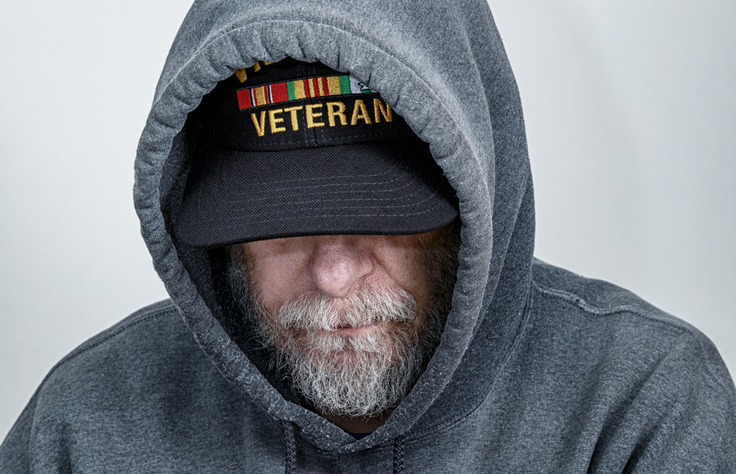
Look at the time. Now count off 11 minutes.
According to the Centers for Disease Control and Prevention, when that last second ticks away, you will know that someone in the United States has just taken their own life. Someone else who didn’t think they could make it even one more minute. Someone who lost the bond of community and the sense of self-worth it takes to keep going.
Too many of them are veterans.
In 2020, 6,146 American suicide deaths among military veterans were reported to the U.S. Department of Veterans Affairs, according to the National Veteran Suicide Prevention Annual Report for 2022. It was the second leading cause of death among veterans under 45 that year. And that's just the ones reported to the VA. The actual number is likely much higher.
That comes out to 31.7 suicides for every 100,000 veterans. By comparison, the rate for the general population that same year was only 13.5 per 100,000.
As jarring as those statics are, it’s even more shocking to learn that it’s not a phenomenon unique to veterans. Published in 2022, the Congressional Research Service report, Trends in Active-Duty Military Deaths (2006-2021), shows that every year since 2012, the active-duty force has lost more service members to suicide than to enemy action.
This isn’t news to veterans or service members themselves. Each loss represents a friend, comrade, or team member gone forever. Every single one hurts. And every single one brings the painful reminder that something very troubling is happening within the military and veteran community.
This isn’t news to the Department of Veterans Affairs (VA), either. According to a 2021 Government Accountability Office (GAO) report, the VA expanded funding for mental health services from $2.4 to $8.9 billion between 2006 and 2019, making suicide prevention its number one priority. Even so, the epidemic of veteran suicides persists.
The problem is also one that’s all too familiar to Dr. Joe Hunter, a Utica University professor and licensed clinical social worker in New York who spent nearly 15 years working with at-risk veterans in the VA. Hunter remains resolute, bringing the hope of a powerful new theory and treatment options that consider the social factors that can affect self-preservation, all aimed at the noble goal of stemming the tide of veteran suicides
Joseph S. Hunter, Ph.D. – Director of the Master of Social Work Program, Professor of Practice, and Director of the Suicide Prevention Center at Utica University
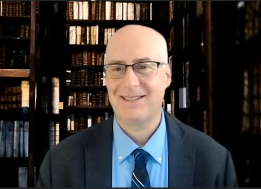 Dr. Joseph S. Hunter is a New York-state Licensed Clinical Social Worker with over 30 years of experience who holds a bachelor’s degree in psychology, along with an MSW and Ph.D. in Social Work. He has been recognized as a VA/Hartford Geriatric Social Work Scholar and also for his innovative work in behavioral health.
Dr. Joseph S. Hunter is a New York-state Licensed Clinical Social Worker with over 30 years of experience who holds a bachelor’s degree in psychology, along with an MSW and Ph.D. in Social Work. He has been recognized as a VA/Hartford Geriatric Social Work Scholar and also for his innovative work in behavioral health.
After an extensive career as an adolescent addictions expert, including service to the State of New York, Dr. Hunter joined the Department of Veterans Affairs, serving for nearly 15 years as Suicide Prevention Coordinator at the Stratton VA Medical Center in Albany, New York and with the department’s National Suicide Prevention Office.
Dr. Hunter currently serves as the Program Director and professor of practice for the Master of Social Work Program at Utica University in New York, a military-supportive school that has received national recognition for its online MSW program.
Dr. Hunter specializes in teaching clinical practice for service members and veterans, as well as evidence-based clinical practice in mental health settings, mental health and human development, and mental health research.
Although his dissertation and previous experience had been in youth addiction treatment, something powerful was calling Dr. Hunter to work with veterans. When an opening came up at the VA for a suicide prevention coordinator, he made the leap.
“Really it was a calling to say, ‘You know what? I didn’t serve in the military. Here’s an opportunity to really make a difference. Why don’t I jump in with both feet and give it a shot?’” Hunter thought.
Veterans are a Unique Population with Unique Vulnerabilities
The work Dr. Hunter had done in addiction treatment may have played a role in his approach to suicide prevention. A study he conducted with New York state data revealed that different populations often had different responses to certain treatment techniques. It was an interesting discovery at the time, and one that prompted him to keep his eyes open to the possibility that unique patterns sometimes emerge from research data.
Over the course of his 15 years with the VA, Hunter worked with thousands of high-risk veterans, and in that time, began to notice a pattern in that population too.
He observed that, “They felt like an outsider, they felt different, and they felt ostracized or lonely or disconnected. And beneath that, often they felt alienated or alone.”
That observation led to a powerful insight: finding and addressing the roots of those conditions themselves could be an effective treatment for the veteran population, and an early intervention with the potential to stop suicidal ideation before it starts.
The Self Preservation Theory of Human Behavior Reveals New Insights Into Veteran Suicide
The conventional view of suicide risk has tied it to mental health issues: depression, affective disorders, anxiety, and psychosis.
But Hunter knew that many suicides were not necessarily tied to prominent mental health disorders. And he instead began to look for ties between suicide risk and another factor… socio-emotional vulnerabilities.
If human beings are innately social creatures, then suicide may well be a social disease.
This point goes to the very heart of Hunter’s Self Preservation Theory of Human Behavior (SPT), which may offer new opportunities for the treatment and prevention of suicide among veterans.
Linking Self Preservation to Group Preservation May Be Key to Understanding Veteran Suicides
Self Preservation Theory takes an original approach to understanding the dynamics behind suicide as inextricably linked to how social relationships drive individual conceptions of self-worth. The idea being that the instinct for self-preservation can’t be separated from the instinctual need to contribute something of value to the social group.
“In fact, the self in self-preservation, if you look at the theory paper, is really about the self of us,” Hunter says. “There is no individual without us, and so self-preservation refers to an existential preservation that comes through individual contribution, as it’s valued and appreciated and makes a difference in the larger social group.”
Hunter goes even further, asserting in his paper that individual identity is inextricably linked to social relationships, that we’re actually hardwired to engage in mutually beneficial relationships with others.
When the wiring between our individual contributions and our place in society breaks down, vulnerability to suicide increases.
“And that’s a fascinating concept,” Hunter says, “That we stop defining self as me, and recognize that self is all of us. And beyond that, you embrace diversity because it brings in the difference in all of us that strengthens us as a whole.”
It’s an idea that is particularly relevant to understanding veteran suicides. After all, this is a population that has gone from the tight interdependent bonds found in military units to the civilian world where this level of social cohesion is rarely a normal part of everyday life.
More than that, the survival mechanisms in a military organization are particularly clear and direct—there’s no question, for example, that an automatic rifleman in a fire team is directly contributing to the survival of the group when they lay down a base of fire covering the maneuver element. Similar clarity comes with most military jobs.
“To bring something of ourselves – a unique contribution, like think of the hunter – to our community in a way that's valued and appreciated. And if you think about that, it's a very simple idea that on this fundamental level, that we are wired for this.”
It’s not hard to understand why that quality may be missing the same sense of clarity in the civilian world for veterans. The adjustment to civilian life is famously difficult, with a loss of structure and purpose commonly reported among recently discharged soldiers, sailors, airmen, and Marines. Many, particularly those who experienced trauma during their service, feel disconnected even from family and friends.
But until SPT, the lines between those feelings of disconnection and veteran suicide rates were never so clear.
SPT Identifies Four Factors That Contribute to a Sense of Meaning and Purpose in Life
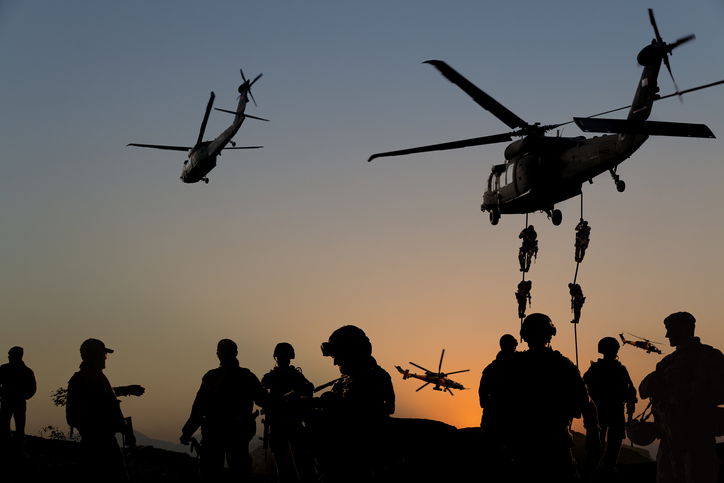
In the Self Preservation Theory of Human Behavior, Dr. Hunter identifies four factors as contributing to this existential preservation dynamic. To maintain mutually beneficial interdependence, he believes, people need to:
- Be Socially Engaged - Have a connection to their group or society
- Act as an Agent of Change - Capable of acting with and for the benefit of that society
- Offer a Unique Contribution - Believe that the changes and efforts they make are effective and have worth to the larger group
- Have the Experience of Being Valued - Receive recognition from society that their efforts and contributions are valued
Hunter’s theory is that depression, anxiety, and vulnerability to suicidal thoughts and intentions is caused, at root, by breakdowns in one or more of those four dynamics.
“The emphasis of this theory is on this idea that as human beings, we’ve evolved to who we are today through a process,” says Dr. Hunter. “As human beings, we developed this unique ability to work together to be successful.”
Without feeling like a valued part of that process, veterans are susceptible to struggling with the roots of identity and purpose in life.
Biological and Social Imperatives Have Driven SPT Factors Deep Into Human Evolution
When individuals can no longer see themselves as a valuable and valued part of group effort, suicide risk rises.
Equally important, SPT ties these factors back to evolutionary reinforcement. Those deep roots through the history of the human race make them powerful. Through the long arc of human evolution, survival has been about not only our individual strength and guile, but also our capability to work together, Dr. Hunter suggests.
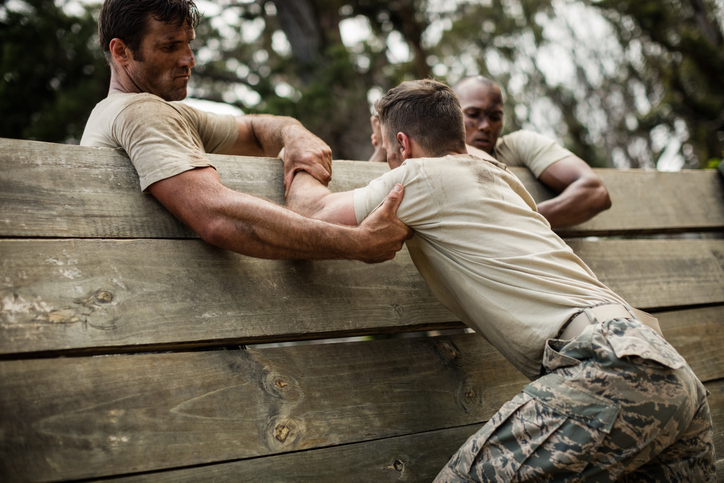
Sociological work ties self-worth and social connection to a concept of joint intentionality, a shared goal that human groups may adopt implicitly in ways that other primates do not. It’s an ability found even in toddlers.
Mutuality is the balance that each individual brings in contributing to that joint intention.
Hunter’s SPT has unearthed the strong neurological reinforcement that has been hammered into the human brain for millions of years and connects it to the suicide risk that comes from the disconnection of that joint intentionality. Just as with other biological imperatives driven through evolutionary pressures, like reproduction, those factors are exceptionally strong.
Self Preservation Theory Suggests Not Just Additional Risks for Veterans, but Also Additional Opportunities to Help Them
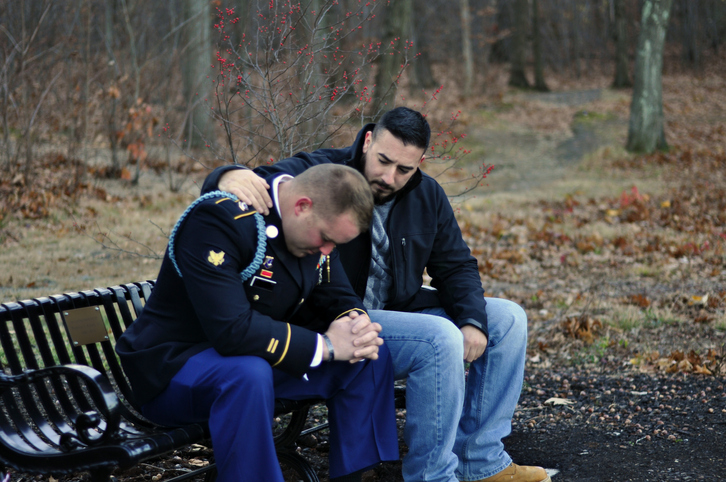
The theory has important implications for diagnosing risk factors and preventing suicide that reach far beyond veterans. But it also suggests some important reasons why veterans are so much more susceptible to suicidal tendency in the first place.
Recognizing the importance of community connections is key. But not all community is created equal. As many veterans can attest, a rifle company or ship’s crew can become a whole society within itself. Going from the strong social structure of a military unit to civilian life creates a strong contrast that many veterans notice.
The tight bonds of service may reflect the evolutionary pressures toward group attachment unlike any other experience in the modern world. There’s nothing that stokes joint intentionality like coming under fire with your comrades. And the nature of military units reinforces the sense that each individual has a key role to play in accomplishing their mission.
The stark contrast that comes after separation from military service may serve to accelerate the vulnerabilities that SPT identifies.
According to Hunter, veterans are also uniquely vulnerable to suicide because their own exposure to death has fostered a premature readiness for death and dying. Combined with the disruption in mutuality that may rise from a transition to the civilian social spectrum, it’s a potentially fatal combination.
Motivated by Service to Others, Veterans May Neglect to Serve Themselves
Worse, veterans may be less likely than the general population to seek care for suicidal thoughts. Hunter says most join the service in order to do exactly that: serve. But that can make them reluctant to look for help.
“It’s very hard to then have that veteran turn around and say, ‘I need to treat myself like I would treat my best friend or my closest family member,’” Hunter says.
Many veterans also assume they are ineligible for assistance. But, according to Hunter, that doesn’t have to be the case. Almost any kind of traumatic event or injury can lead to eligibility for treatment.
“If you were serving and something happened, you were in a motorcycle accident, it doesn’t have to be combat, and you were in some way injured,” he points out, “you could become service connected and then you become automatically eligible through that service connection for VA services, or potentially Vet Center services.”
In other cases, veterans downplay their own pain or difficulties. There’s always someone who had it worse. But Hunter cautions against self-diagnosis and dismissal of that sort.
“Going back to traumatic experiences,” says Hunter, “most people think, ‘Oh, well, you had to have done hand to hand combat, or he had to have been in battle’, but that’s not true at all.” Any veteran with an injury during service should seek services they may be entitled to from the VA.
SPT Suggests Community Can Be the Answer to Reducing Veteran Suicide Rates
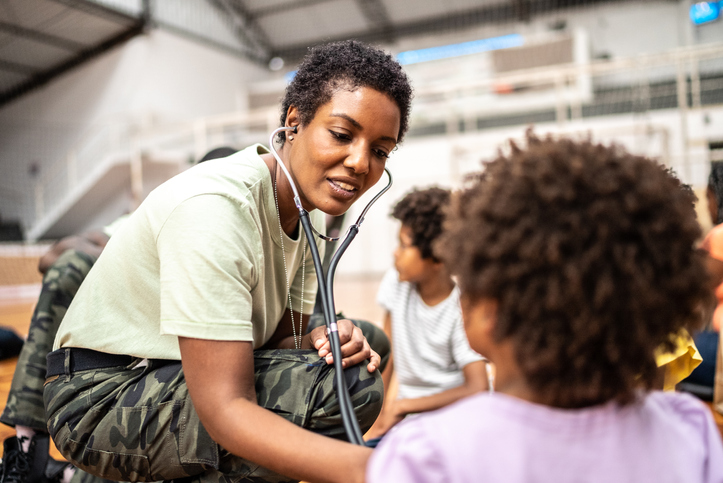
Self Preservation Theory has some solid answers for dealing with that mindset.
For starters, the theory suggests that veterans themselves could be the best resource for putting the lessons of SPT into action. As a group with so much in common, they could represent a ready-made community to offer support and value to other vets.
“You have to understand the mindset of veterans. Kind of like social workers, they join to serve others, right?” Hunter says. “They want to be about helping others. They'll have your back on a whim.”
If SPT suggests that social engagement, acting as a change agent, and offering a unique contribution are of value in self preservation, then why not lean into the inclination veterans already have to be team players? Hunter believes it’s important to tap into that inclination as a way to embrace the attitude within the veteran community that it’s just as important to be the one seeking help as it is to be the one helping.
“We have to recognize that and be willing to support veterans and help them understand the team aspect of mental health. Veterans are trained to be part of a team. You help each other, you put the other person first, you take care of them,” he notes.
What they are missing, Hunter suggests, is recognition that taking care of yourself is an equally important part of being there for others.
No suicide goes unnoticed, particularly among veterans. As many as 135 individuals are affected by each incident of suicide according to research published in the Centre for Suicide Prevention in 2019.
“But the team aspect of this is that you also have to let people help you,” he points out. “Sometimes we all struggle, and it’s important to allow others to step in and help you and get your back. If you seek help, you’re not only helping yourself, you’re helping others. And I think it’s important the veterans understand that, and family members are willing and able to communicate that message as well.”
The Military Community Needs Veteran Social Workers—and the VA Offers Resources to Train Them
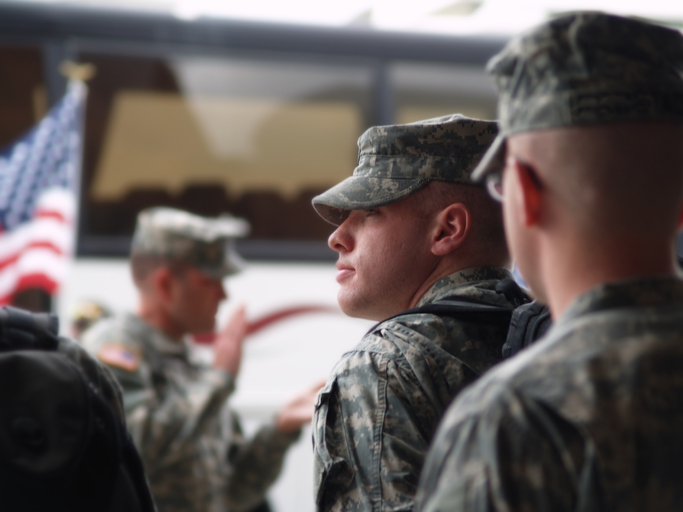
The inclination toward service and helping others can also help build the veteran counseling community. If the community itself is important, then the ability to draw on therapists and social workers who are already a part of it can make a huge difference in treating veterans. And the VA is constantly on the lookout for the best talent.
“The VA really does have the ability to recruit very strong practitioners, whether it’s in medicine or surgery or whatever it is, because the VA provides that whole slew of services across a huge system in the United States,” says Dr. Hunter. “Veterans can access the specialty services they need.”
Recruiting mental health providers is not the only place the VA is spending money. It’s also doing a lot to help train up veterans for those roles. While mental health service funding reached nearly $9 billion at the VA in 2020, educational support funding for the same year was over $12 billion.
Veterans and active duty service members eligible for programs such as the GI Bill® can tap into that funding to pursue their own degrees in social work, therapy, or counseling.
It’s not unusual for veterans to seek out roles in the civilian world that are rooted in building, teaching, and caring for others. According to the Student Veterans of America National Veteran Education Success Tracker, degrees in the health professions are the fourth most common type of degree earned using Post-9/11 GI Bill® benefits.
A Master of Social Work (MSW) like the one offered at Utica University is the first major step on the path to licensure as a clinical social worker. Learning about theories like SPT and suicide prevention modalities at the college level builds new strength and confidence in helping others. And although prior service isn’t a requirement, SPT suggests that it could be a strong benefit when your role is reaching out to other former service members.
Using Self Preservation Theory and their common background of service, veterans who go on to become social workers may have an edge in forging connections with fellow vets in need. They can help rebuild the deep social ties that contribute to a sense of well-being, security, and purpose. In fact, they stand as examples of exactly that—by becoming social workers and therapists, they have developed a new kind of expertise that serves a purpose in civilian society.
“Most veterans are eligible to get care at the VA and/or Vet Centers, and this is a tremendous resource for them. They don't necessarily have to be service connected, which means basically they have a psychological or physical injury from their service. Anything from tinnitus… to PTSD.”
We’re Just Beginning to Make Progress in Preventing Veteran Suicides
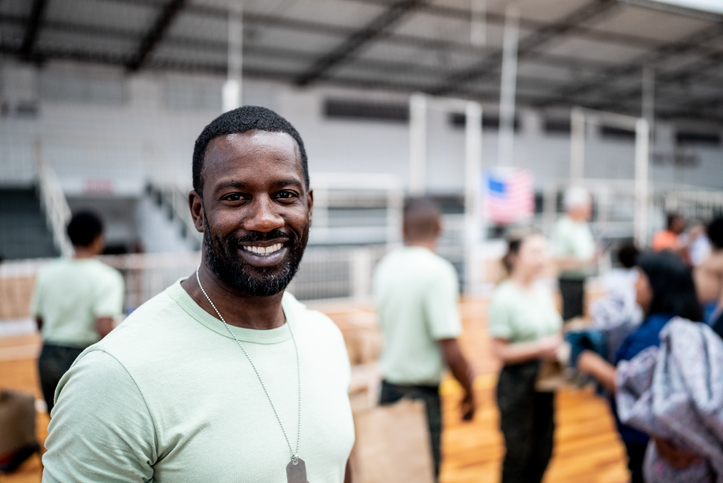
Dr. Hunter has been a social worker for too long to believe that there are any easy answers in veteran suicide prevention. But he believes that Self Preservation Theory offers important insights into building communities that can deliver answers in the long run.
In fact, on his watch, the VA’s investment in mental health care and suicide prevention has already paid dividends. In nearly quadrupling their mental health treatment investments between 2006 and 2019 and making suicide prevention their highest priority, the VA nearly doubled the number of veterans receiving mental health care. They expect an additional 32 percent increase over the next decade, according to the GAO report cited above.
That, too, has implications under SPT.
“Sometimes veterans say, ‘That’s for someone else, they need it more than me. I don’t want to take that spot,’” Hunter has noticed. But he wants to clear up the roots of that misunderstanding: “That is completely the wrong kind of thinking, because the way it works in the VA system is for every veteran who seeks care at the local VA medical center, the federal government gives them more money.”
And it’s having an impact… according to the VA’s 2022 National Veteran Suicide Prevention Annual Report, between 2018 and 2020, age and sex-adjusted suicide rates for veterans dropped by 9.7 percent… almost double the decline in suicides in the general population.
With a better understanding of how SPT can point to actionable ways to help vets regain a sense of self-worth through community, trained social workers are making a difference every day. The more of them that are drawn from the ranks of former service members the better.
But it’s a job for the larger veteran community to provide the lift that gets the most vulnerable among them the help they need. Years of difficulty finding treatment has deepened a reluctance among many vets to even ask for assistance. Dr. Hunter has a message for them, too: “The VA has only broadened the eligibility for veterans. So even veterans who have looked in the past and thought they couldn’t get in, it’s worth taking a second look.”
The appearance of U.S. Department of Defense (DoD) visual information does not imply or constitute DoD endorsement.
GI Bill® is a registered trademark of the U.S. Department of Veterans Affairs (VA). More information about education benefits offered by VA is available at the official U.S. government website at https://www.benefits.va.gov/gibill.





